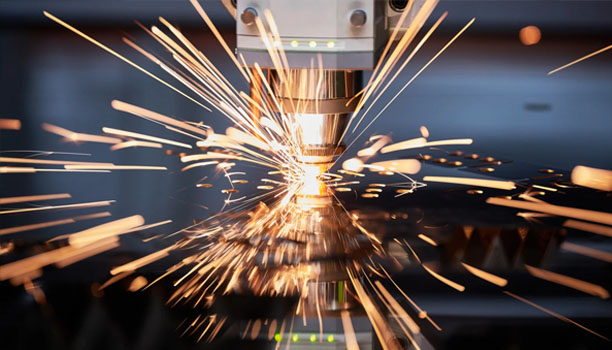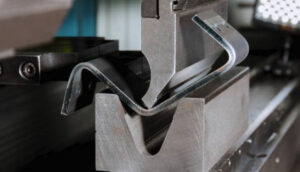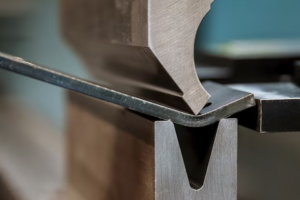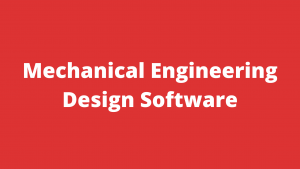Laser cutting is one of the most efficient ways to cut sheet metal. When selecting a cutting process for a sheet metal fabrication project, it is critical to weigh the capabilities of the tool versus the needs of the project.
Laser cutting is the best option for many sheet metal construction projects. We’ve compiled a list of reasons why laser cutters are a good place to start when it comes to sheet metal fabrication projects.
Relatively Low Cost
Laser cutting is very cost-effective when compared to other cutting mechanisms. Because of the CNC automation involved, labor costs are minimal, as no one is required to operate these machines when they are in use.
Instead, you’ll just flip a switch and let it run. Additionally, lasers are not dull or worn like other cutting tools. For this reason, no necessary changes occur mid-process, leading to better productivity and shorter lead times.
When there are minimum interruptions in the cutting process, the cost will be low.
Speed and Efficiency
Lasers can cut material very quickly, at speeds of 20-70 inches per minute. The exact speed will depend on the tolerances and complexity of the parts, however, they move very quickly.
The cutting speed can be increased even further by using a multi-head laser or multiple lasers working together.
In addition to faster cutting speeds, laser cutters can operate overnight and when operators are not around, increasing the overall efficiency of the cutting process.
The combination of these factors means that the laser cutter will finish parts faster than other cutting processes.
Automation
One of the advantages of laser cutting is that the machines are run entirely by CNC controls. Someone would enter the code into the computer, leaving little or no variation in parts and products and significantly fewer defects.
Automation also means that less labor is required to operate the machine and perform its tasks, making the process more efficient.
Automation of the cutting process results in greater efficiency and higher quality products.
High Precision
Laser cutters have highly detailed capabilities, capable of making small cuts and tight tolerances. If you need intricate cuts, a laser cutter is the best choice. They create smooth, sharp, and clean edges and curves.
They will produce little or no burrs as the laser melts the material instead of cutting it. Laser cutters are very suitable for sheet metal fabrication because they are highly precise and will make precise, high-quality cuts.
Highly Versatile
The cost of operation, machine speed, and easy operation make laser cutters suitable for any size product. Since laser cutters are precise and precise, you can be sure that the result is of the highest quality.
Laser cutters can cut a wide variety of materials, including most metals, making them an ideal choice for sheet metal fabrication. They can handle tight tolerances and complex designs, ensuring that any project is within their reach.
Laser cutters are also one of the fastest options for cutting sheet metal, ensuring that your project will be completed on time with minimal disruption.
Working of Laser Cutting Machine
Laser cutting is a method of cutting shapes or designs in sheet metal or other structural materials that are primarily used in the manufacturing industry but is also growing in popularity among other denominations, such as schools and hobbyists.
Laser cutting is often used when the etching process is not an option due to the size and nature of the component required.
The laser melts, burns, cuts, and then blows up the pattern as instructed by the computer. The laser beam is easily manipulated to achieve the desired result.
Why Do We Use Laser Cutting?
It is a substitute for the etching process, but it also has numerous advantages. Not only can laser cutting deliver a high degree of accuracy and precision, but it also does so consistently and with little room for human error.
This results in less energy being used, less waste, and, as a result, a lower-cost solution.
More complex designs than etching can be applied to smaller parts while still leaving metals burr-free and clean cut.
Furthermore, laser cutting results in less workpiece contamination, which increases machine longevity.
Advantages of Laser Cutting Process
1. Laser cutting is faster than other traditional cutting techniques because most of the work is automated.
2. It is easier to hold a piece of metal in laser cutting than in mechanical cutting.
3. The cuts achieved by laser are more precise than any other method of cutting metals. This is the reason why laser cutting is preferred in industries that result in the need for absolute precise sizing of metals.
4. In the laser process, the metal does not come into direct contact with other metals to facilitate cutting. Therefore the metal is cut more finely without any contamination.
5. In traditional processes where heat becomes the tool for cutting metals, the metal edge is usually deformed somewhat, but laser cutting gives you a finer edge metal cutting.
6. The versatility of the process lets you engrave delicate designs on a variety of metals.
7. The laser cutting process requires less energy to cut metals than other traditional methods.
Disadvantages of Laser Cutting Process
1. Laser cutting requires more power consumption than other techniques.
2. The laser beam is very delicate to handle. The slightest mistake when adjusting the distance and temperature can cause burns or discoloration of the metal.
3. The laser beam is harmful when exposed to human workers. If this happens accidentally, it can cause severe burns.
4. Production is not consistent in laser cutting as the time to cut different metals may vary.
5. It is not complementary to all types of metals.
While you can find other cutting methods that are affordable and have long been preferred, you cannot ignore the plus points that laser cutting has to offer.
The quality of cut provided by laser cutting can hardly be achieved by other methods available to advance the process.




